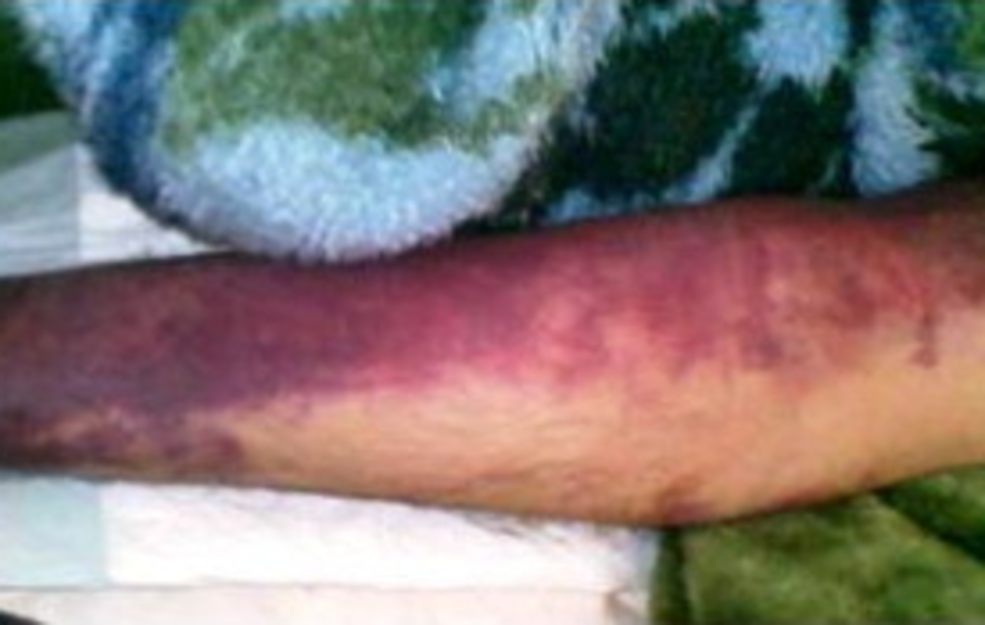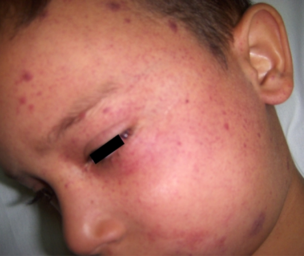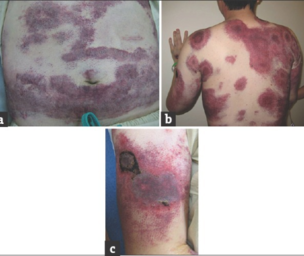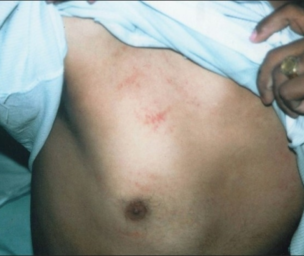What Does Petechiae Look Like?
What Is Petechiae?
Petechiae is mostly seen as small, dark red, purple, or maroon spots which often tend to develop on the skin of an individual. Petechiae is known to be caused due to broken capillaries that often lead to subdermal or submucosal bleeding. Most of the time, they tend to resolve themselves without any need for medical treatment, hence, for this reason, it is not deemed a major cause for concern. Petechiae is known to be quite a common occurrence in the general population, but in patients who are already suffering from a disorder of the platelets or coagulation, it tends to become a very frequent event. If the petechiae is too large in size, then medical treatment or home remedies would be required.
Petechiae is known to last for a period of at least two weeks. For petechiae to be healed completely, it would take a minimum of two to three weeks’ time. The time that would be required for the complete healing of petechiae would mostly be dependent on the severity of the medical condition in the particular individual. Hence, it is advisable to visit the doctor if petechiae keeps recurring again and again or if there is no particular reason for having such skin issues. By ensuring that an appropriate medical treatment is carried out or, if going the route of natural home remedies, it would be ideal to get the complete course of treatment carried out. Most of the time, petechiae is considered to be a trivial matter. In certain cases, there are bigger spots which form through a combination of various petechiae. The diameter or size of these spots range in centimeters and are referred to as purpura. They tend to occupy a bigger space or region. In certain cases, it has been seen that a few of the petechiae spots are much smaller than just a few centimeters in size, and these are called ecchymosis.
Petechiae can be easily distinguished from other kinds of skin spots. When force is applied to them, they do not become discolored, and they are also not easily noticed. Most cases of petechiae are known to be found in the feet and ankle regions, however, there can be cases wherein petechiae would also be seen in the face and neck region. Petechiae is said not to be present on the soles of the feet because of the absence of fatty tissues in that region.
Symptoms
The symptoms of petechiae are dependent on the underlying condition apart from the petechial spots or rashes. The infectious conditions of petechiae are also known to be accompanied by symptoms such as malaise, fever, and certain other flu-related symptoms. Initially, the petechiae is red in color, and it is mostly known to appear in the form of individual blotches during its preliminary stage. However, as time passes, they tend to come together and start to then appear as a rash. Petechiae are basically termed as flat spots which tend to change color as time passes. Hence, it is ideal to reach out to your doctor in case you or your family members come across a case of petechiae. It is important to first establish the cause of the condition. A few of the characteristics of petechiae are mentioned below:
- Size: The ideal size of petechiae would not be more than 3mm. They are basically known to be tiny hemorrhagic spots that are usually only 0.5mm to 1mm in diameter. In the case of the larger form of petechiae, these are greater than 3mm in diameter.
- Color: Most of the time, the initial color of petechiae is red and it would appear as a rash. Gradually, its color turns purple or bluish until, finally, the color of petechiae would turn blue or dark purple.
- Location: As mentioned earlier, petechiae can appear just about anywhere on the body, but there are certain regions where it is seen quite commonly, and they are the legs, ankles, thighs, face, back, and shoulders.
- Never fade: One of the ideal characteristics of petechiae is that if one applies pressure on it, it would not fade, which would mean that the color would not lighten at all.
Causes and Diagnosis
There are certain factors that are known to trigger instances of petechiae, and those factors are as follows:
- As we age, our skin is also aging
- There can be capillary damage caused due to an injury, which is a direct trauma
- When there is a sudden form of elevation in the abdomen, it leads to pressure, or a sudden form of elevation in the cranial pressure which can be caused due to sneezing, laughing, vomiting, or straining while passing stool
- A dip in the platelet count
- Use of certain medications, which can include warfarin, aspirin, clopidogrel, and some other drugs
- In the case of cancer or leukemia patients, there would be a need for radiation therapy or chemotherapy
- Septicemia or bacteremia causing infections
- Certain kinds of autoimmune diseases
There are multiple tests that can be carried out to determine the exact cause, and the treatment is also based on the underlying cause. The doctor would carry out the investigations or the diagnosis with the help of the following procedures:
- The bleeding time
- The platelet counts through various blood tests
- Partial thromoplastin time
- Prothrombin time
- A full blood count to measure the different blood cell proportion
Treatment
- Cold compresses: Cold compresses are known to be one of the best home remedies for petechiae. With the help of the cold compress therapy, the inflammation of the skin would reduce. Also, the risk of petechiae would be reduced as well by using cold compresses. For this process, one would need an ice pack and a small towel. For a period of 15 to 20 minutes, just place the ice pack, wrapped in the towel, on the inflamed or affected region to provide instant relief from the inflammation. If not an ice pack, you can also go in for cold water.
- Baking soda: Baking soda is known to be one of the common as well as the most useful home remedies for petechiae, which is readily available in most households. Baking soda is known to be quite effective, especially when it comes to the lightening of the color of petechiae spots and, gradually, leading to their fading away from the skin itself. The process of using baking soda would include first making a paste of it using five tablespoons of baking soda and coconut oil. Then, mix this paste properly and apply it for around ten minutes on the affected region before you wipe it off with the help of a damp cloth. Be sure to use this remedy on a regular basis for at least a weeks’ time and you will surely see some good results.




















